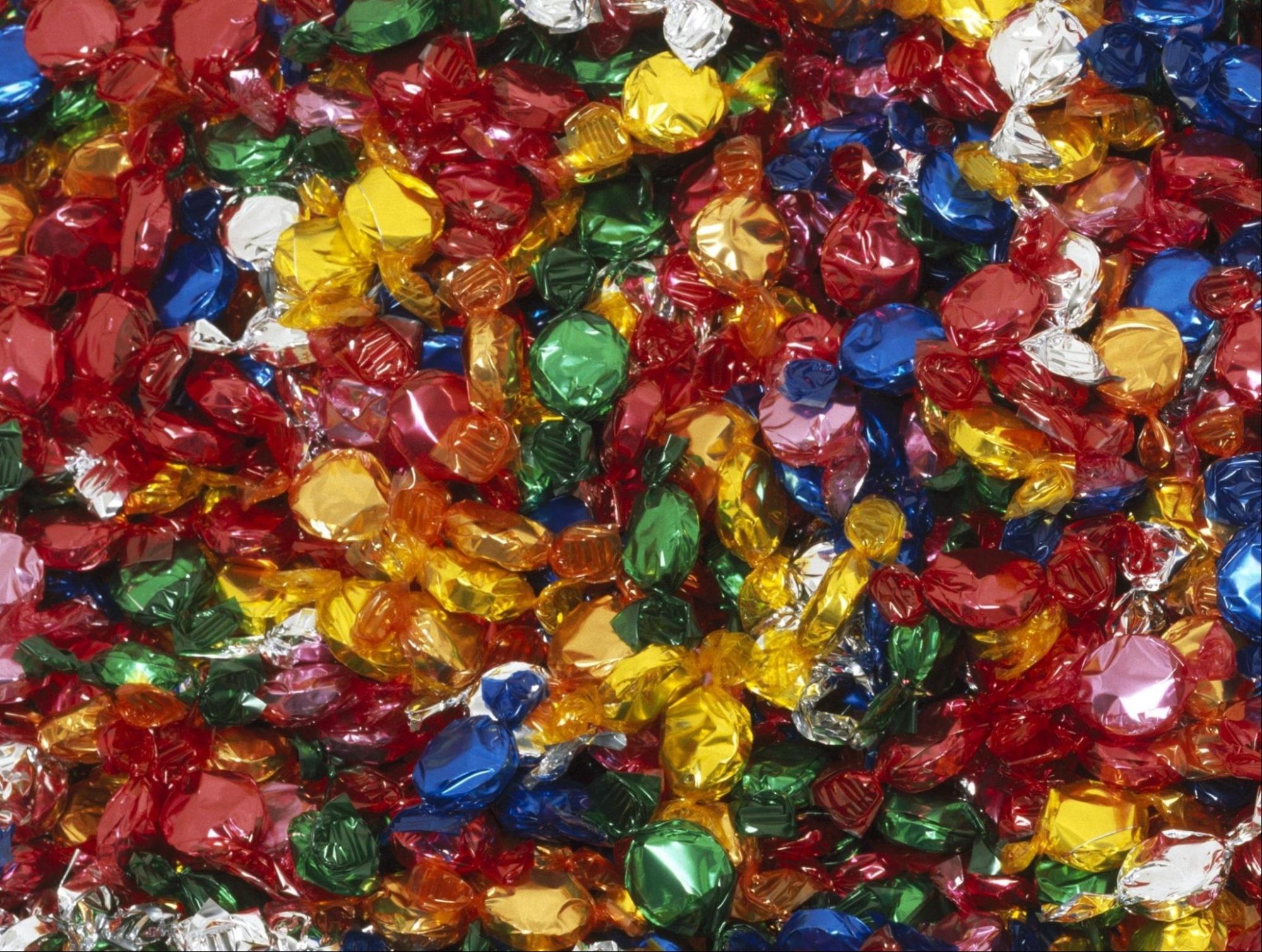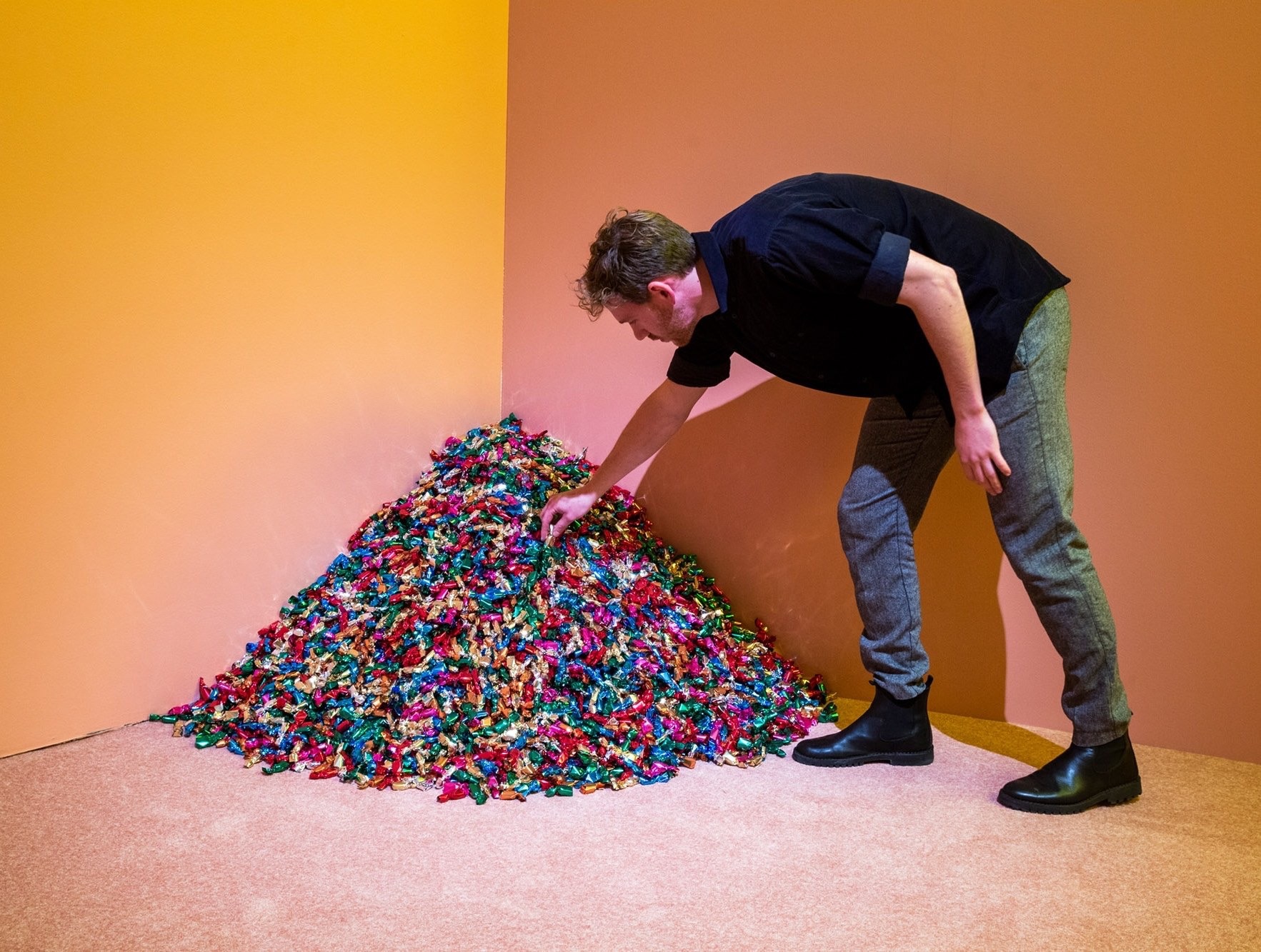Memory and Loss: Felix Gonzalez-Torres – Untitled (Portrait of Ross in L.A.) (1991)
Bickis, Heidi. 2016. “Inhabiting Grey Space and Unravelling Bodily Outlines: Engaging with Julie Mehretu’s Lined Abstractions.” Thesis Eleven136 (1): 124–39.
 |
 |
|---|---|
 |
 |
1,2.Installed on a desktop in the administrative offices of Luhring Augustine Hetzler as part of Felix Gonzalez-Torres. Luhring Augustine Hetzler Gallery, Los Angeles. 19 Oct. - 16 Nov. 1991. Photographer: James Franklin. Image courtesy of Luhring Augustine Hetzler Gallery. 3.Installed in Collection Installation. The Art Institute of Chicago, Chicago, IL. 14 Jul. 2022 - 10 Jan. 2024. Image courtesy of The Art Institute of Chicago. 4.Installed in Objects of Wonder: from Pedestal to Interaction. ARoS Aarhus Kunstmuseum, Aarhus, Denmark. 12 Oct. 2019 - 1 Mar. 2020. Cur. Pernille Taagard Dinesen. Photographer: Lise Balsby. Image courtesy of ARoS Aarhus Kunstmuseum
Felix Gonzalez-Torres’s Untitled (Portrait of Ross in L.A.) is a participatory installation consisting of a pile of brightly wrapped candies weighing 175 pounds—the approximate body weight of his partner Ross, who died of AIDS-related complications. Viewers are invited to take a piece, causing the pile to gradually diminish over time. This gesture, simple on the surface, reveals profound themes of loss, impermanence, love, and care.
Gonzalez-Torres's ability to communicate deep emotional and political concerns through ephemeral, minimal gestures has had a strong influence on my thinking. His use of a shared material—a candy offered to a stranger—invokes intimacy and collective mourning in a public space. In my own practice, especially in my previous edible sculpture projects using chocolate and soap, I explored similar ideas of disappearance, desire, and memory. The temporality and physical degradation of material became a metaphor for emotional erosion and internal decay.
More recently, I see this influence extending into my tattoo-based works. Tattooing, like Gonzalez-Torres’s installations, involves the body, time, and transformation. A tattoo can be an act of care, a mark of memory, a trace of love or loss. His work has helped me think about how audience interaction—whether taking candy or offering skin—can be a site of shared vulnerability. His subtle handling of grief, coupled with material generosity, encourages me to consider how my work might also invite emotional resonance through simple but intimate exchanges.
#participatoryart #tattoo practice #memory #impermanence #care #queerart #loss